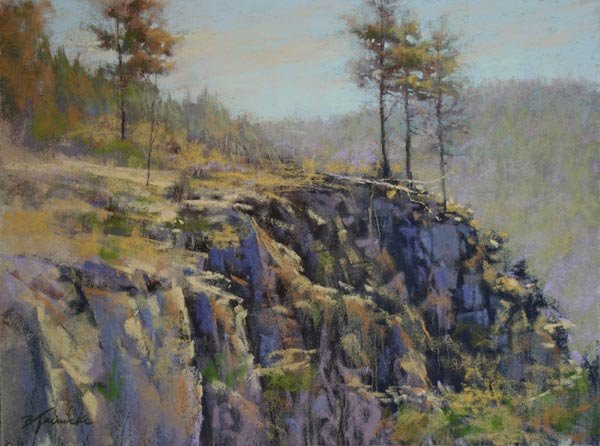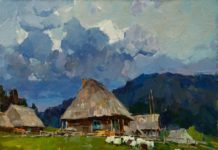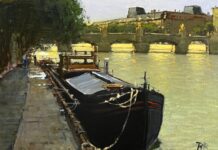The folks who have signed up to be faculty at the 2017 Plein Air Convention & Expo (PACE) are a stellar team, and more painters are being added each week. One of the brightest stars is Oregon painter Barbara Jaenicke. Hear what she has to say about creating a visual mood.
“I work in both oil and pastel — I work an equal amount in both,” she says. “But I think I will be doing a pastel demo at PACE. I do primarily landscape work. When teaching, I focus a lot on painting a visual message or mood. I talk about poetry a lot — that is, everything that goes into making the landscape more poetic, rather than just presenting the subject matter.”
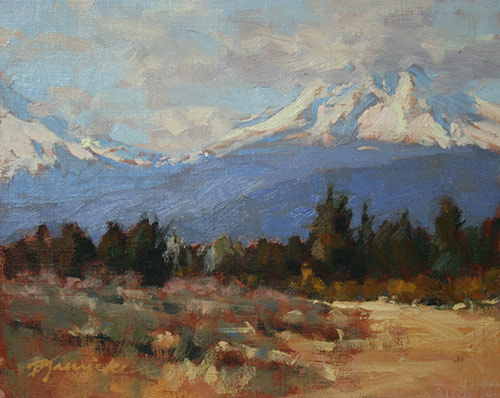
“Clouds on Top,” by Barbara Jaenicke, oil
How does she stress the poetic in a landscape? “By manipulating elements of the landscape to create a visual mood,” says Jaenicke. “Find something you want to focus on in the landscape rather than duplicating the scene. It takes a lot of painting time before one can get to that point and say something special about the landscape. Sometimes it’s the light, sometimes it’s interesting edges, sometimes it’s something in back peeking in through the front. For most landscape artists a lot of the time it is something going on with the light that they want to capture. I try not to get locked into one thing. I just find something exciting in the landscape and find a way to convey that.”
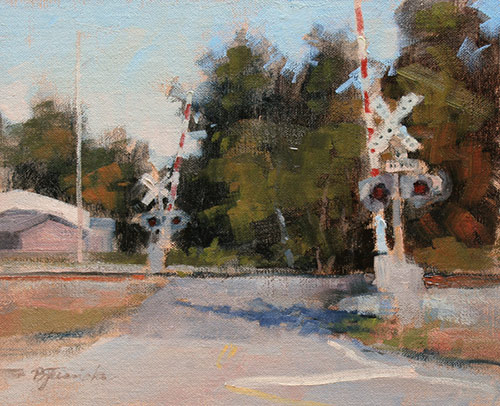
“Crossing,” by Barbara Jaenicke, oil
And how does she convey it? “I typically use four things,” Jaenicke says. “1. Color temperature. 2. Composition. 3. Color harmony. 4. Edges and editing. All of them together constitute my artistic bag of tricks, my tools to zero in and say what I want to say about the landscape.”
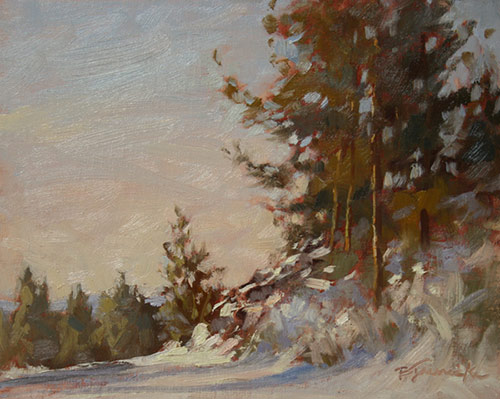
“15th Street Rise,” by Barbara Jaenicke, oil
Jaenicke tackles plein air scenes by whittling down shapes in the scene to just four or five. “I look for nice variety of large and small shapes,” she says. Jaenicke will watch for compelling proportions and juxtapositions that create drama, such as a little shack next to a towering mountain, or a small glint of sunlight hitting one tree next to a mass of trees.
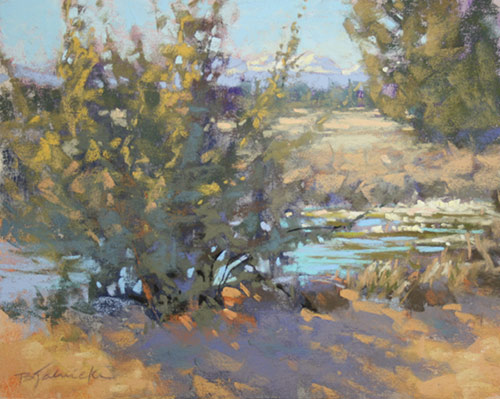
“Along the Canal,” by Barbara Jaenicke, pastel
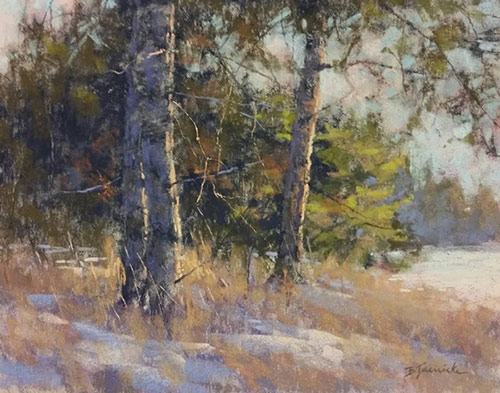
“Three of a Kind,” by Barbara Jaenicke, pastel. Studio
In the studio, Jaenicke reaches back to her experience as a graphic designer to utilize tracing paper in her composition stage. “I will do sketchbook thumbnails, then draw a proportional rectangle, draw on tracing paper, put it on a printout of a photo, and crop the photo the best I can. I can shift a tree around using this. Not so much to trace anything, but to play with composition and see it in terms of simplified shapes and move them around. I may play with a value sketch after that.”

“Springtime’s Arrival,” by Barbara Jaenicke, oil
Jaenicke is a veteran of IAPS (International Association of Pastel Societies) conventions, so she has an idea of who her audience will be at PACE. “For people to go to a convention like PACE, they are usually not brand new beginners,” says Jaenicke. “They are pretty good artists themselves who are interested in how others make art.”
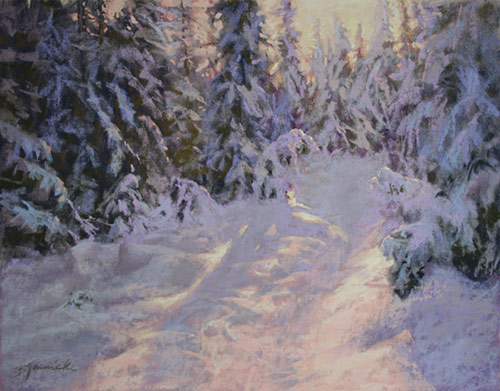
“Immersed in Wonderland,” by Barbara Jaenicke, pastel. Studio piece
If you missed out on this year’s event, don’t make the same mistake twice. Check out the website for PACE 2017, in San Diego, California. It’s filling up fast already.

